Abstract
Two-key concurrent responding was maintained for three pigeons by a single variable-interval 1-minute schedule of reinforcement in conjunction with a random number generator that assigned feeder operations between keys with equal probability. The duration of blackouts was varied between keys when each response initiated a blackout, and grain arranged by the variable-interval schedule was automatically presented after a blackout (Exp. I). In Exp. II every key peck, except for those that produced grain, initiated a blackout, and grain was dependent upon a response following a blackout. For each pigeon in Exp. I and for one pigeon in Exp. II, the relative frequency of responding on a key approximated, i.e., matched, the relative reciprocal of the duration of the blackout interval on that key. In a third experiment, blackouts scheduled on a variable-interval were of equal duration on the two keys. For one key, grain automatically followed each blackout; for the other key, grain was dependent upon a response and never followed a blackout. The relative frequency of responding on the former key, i.e., the delay key, better approximated the negative exponential function obtained by Chung (1965) than the matching function predicted by Chung and Herrnstein (1967).
Full text
PDF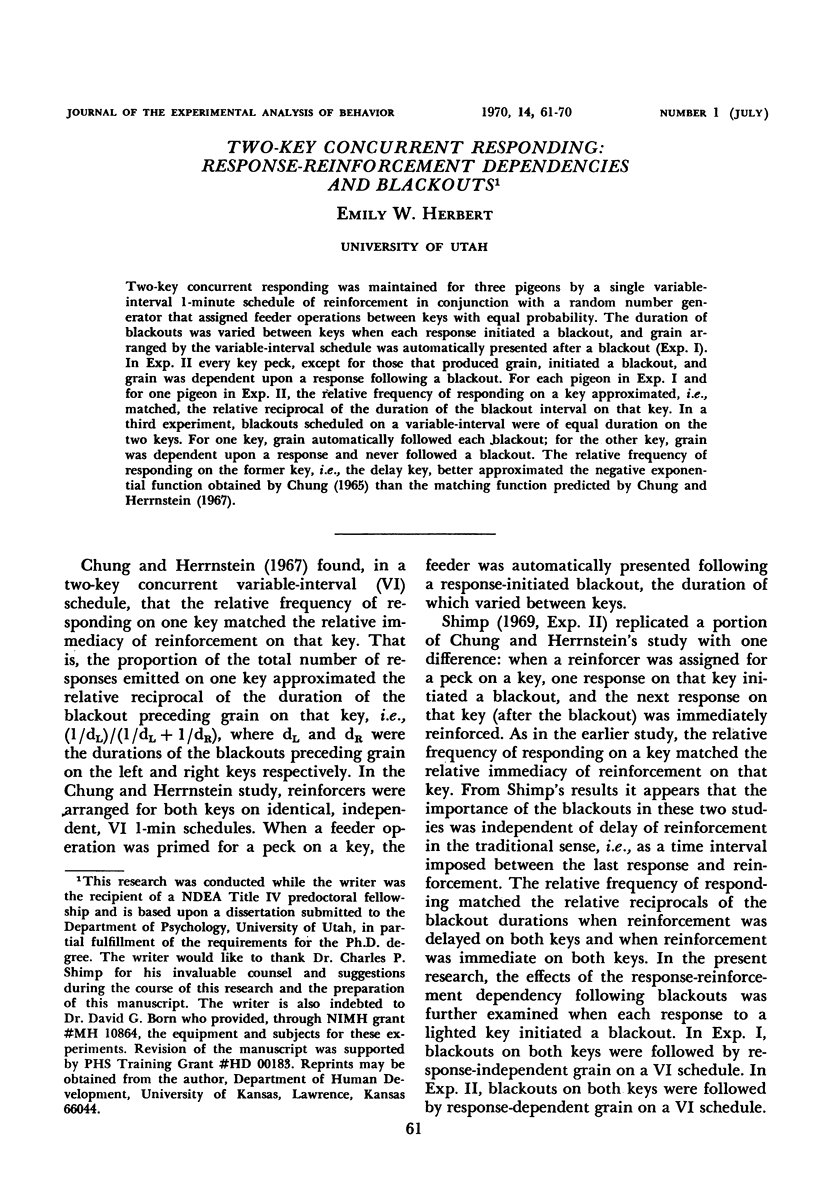
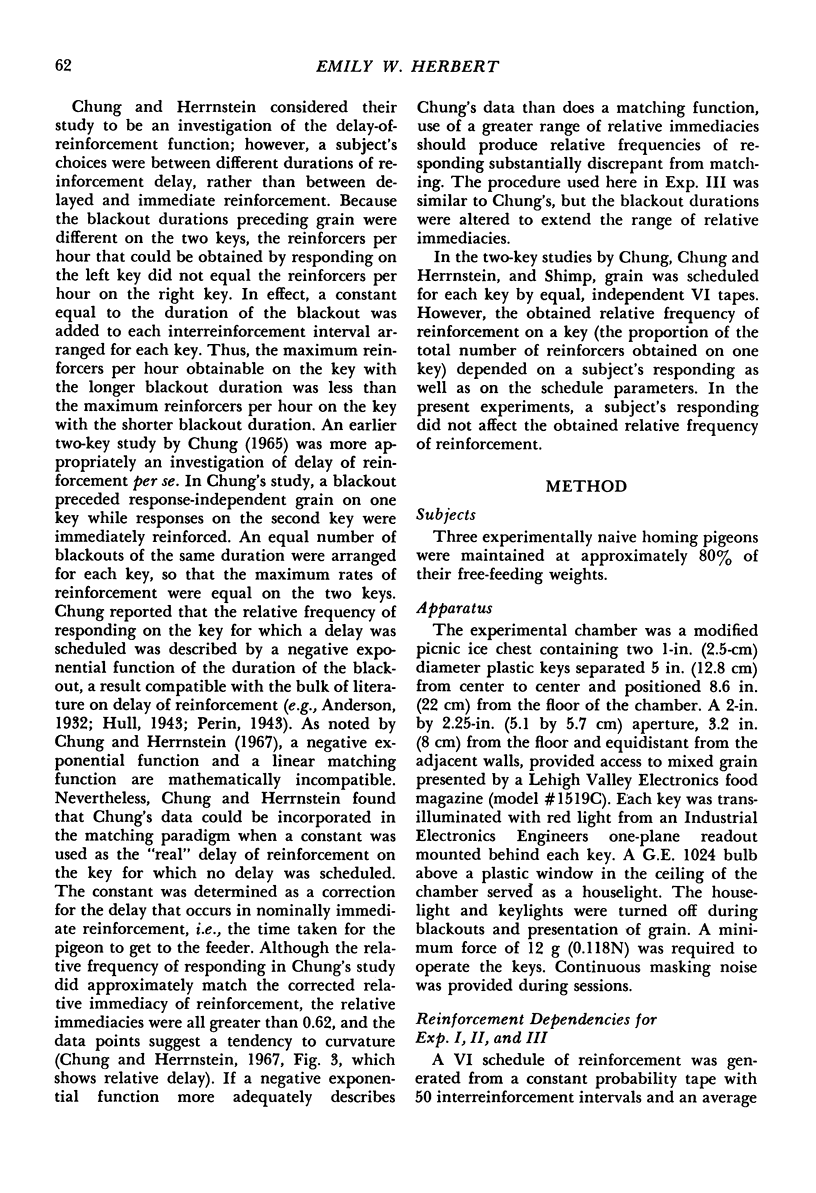
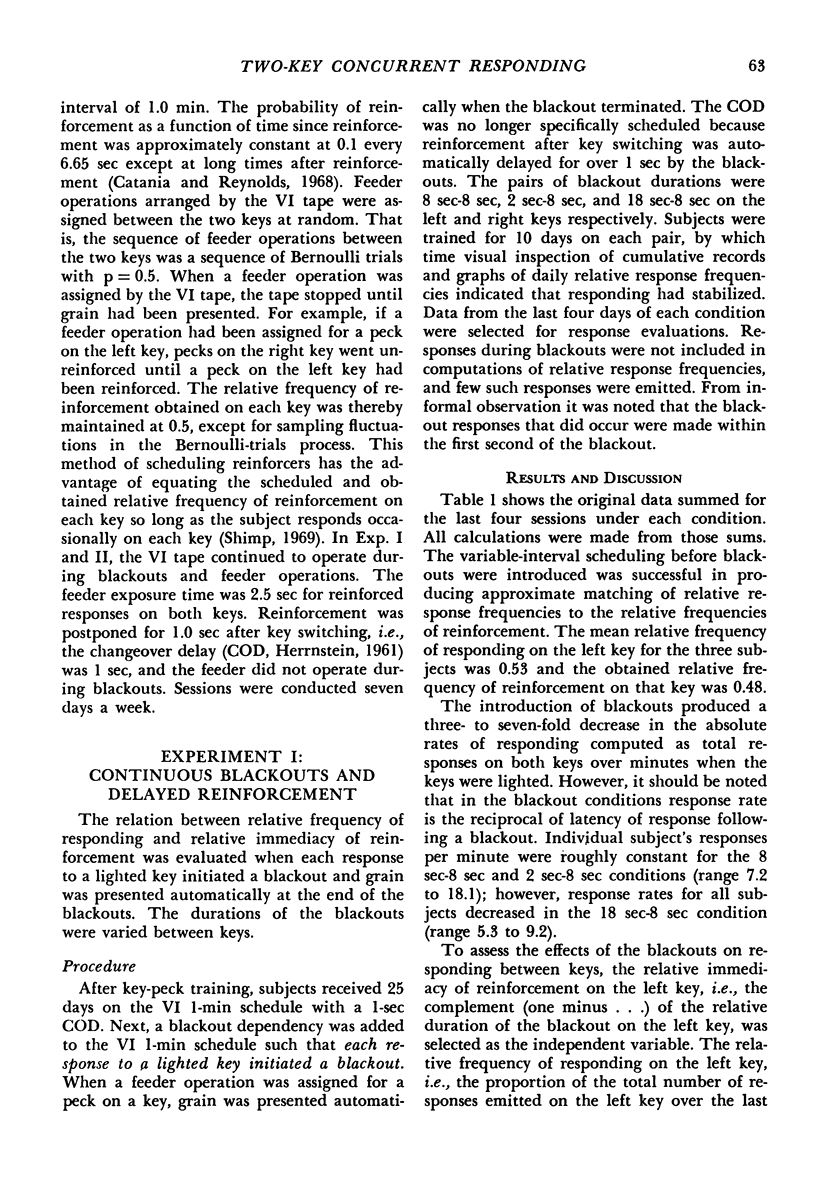
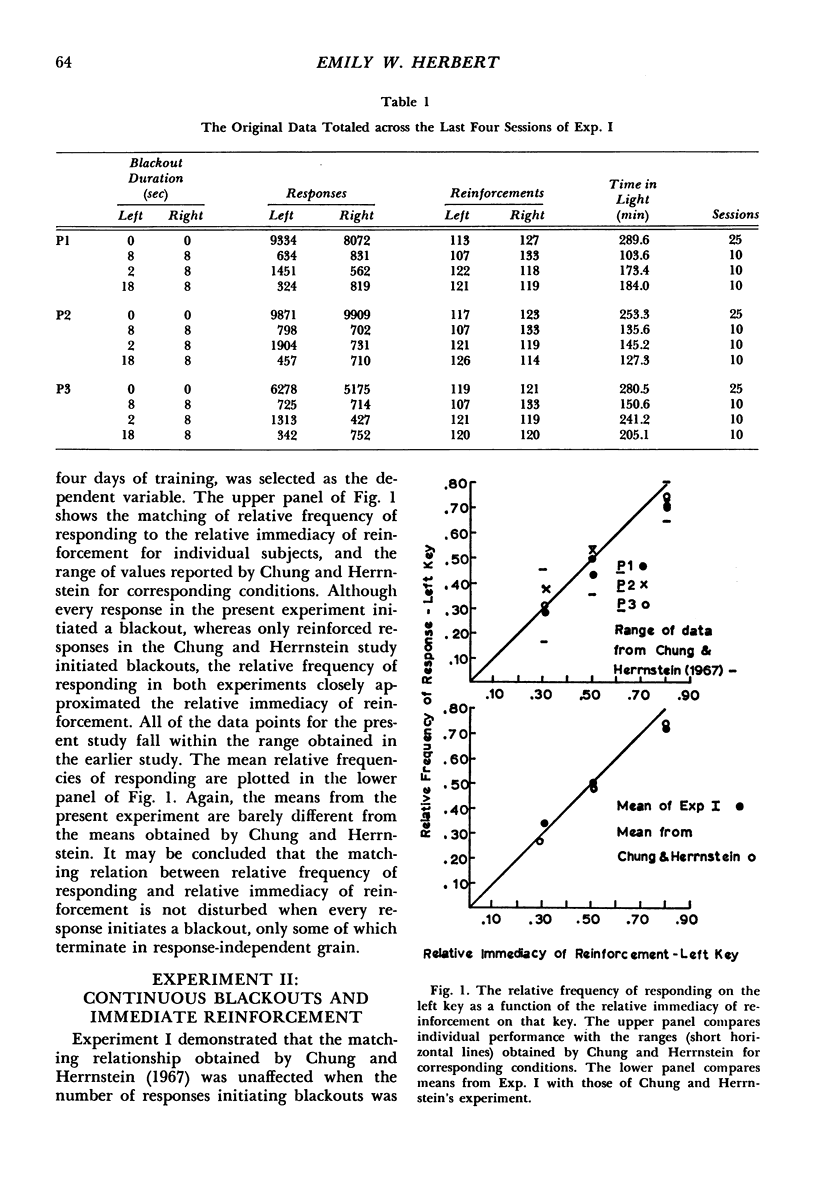
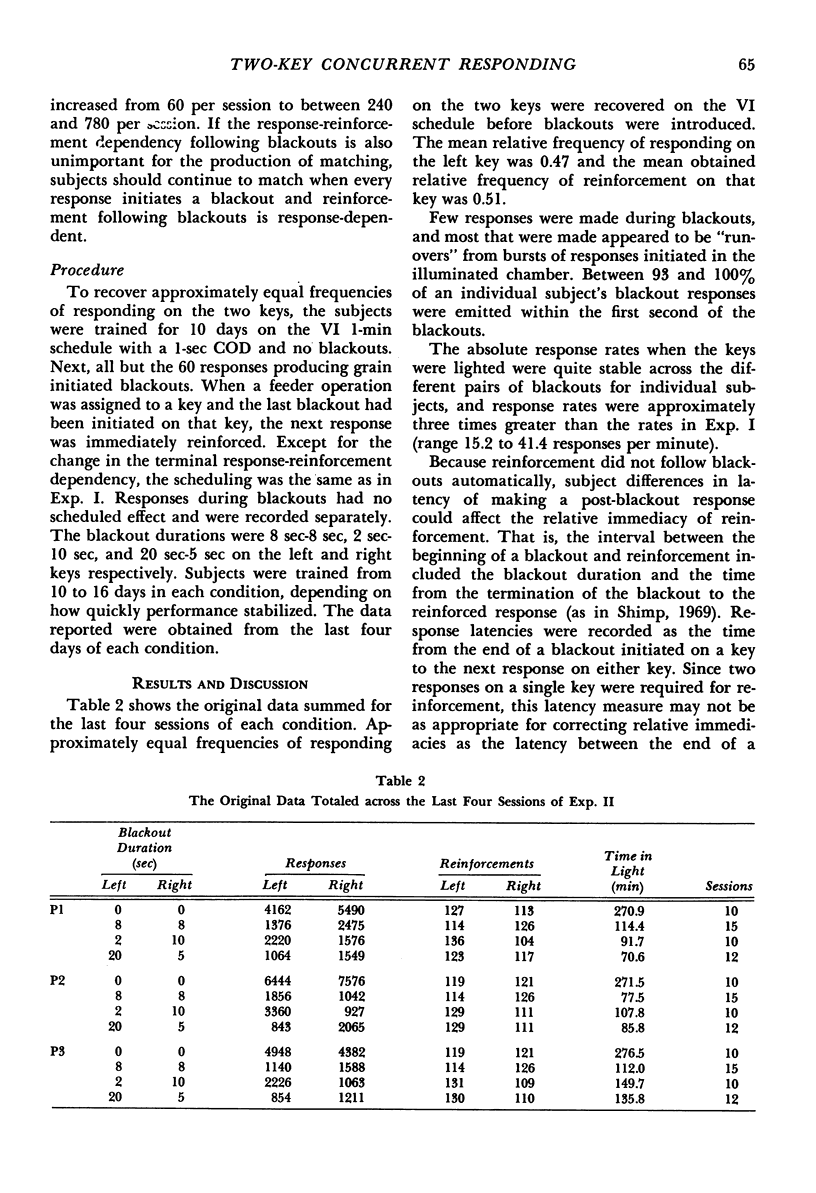
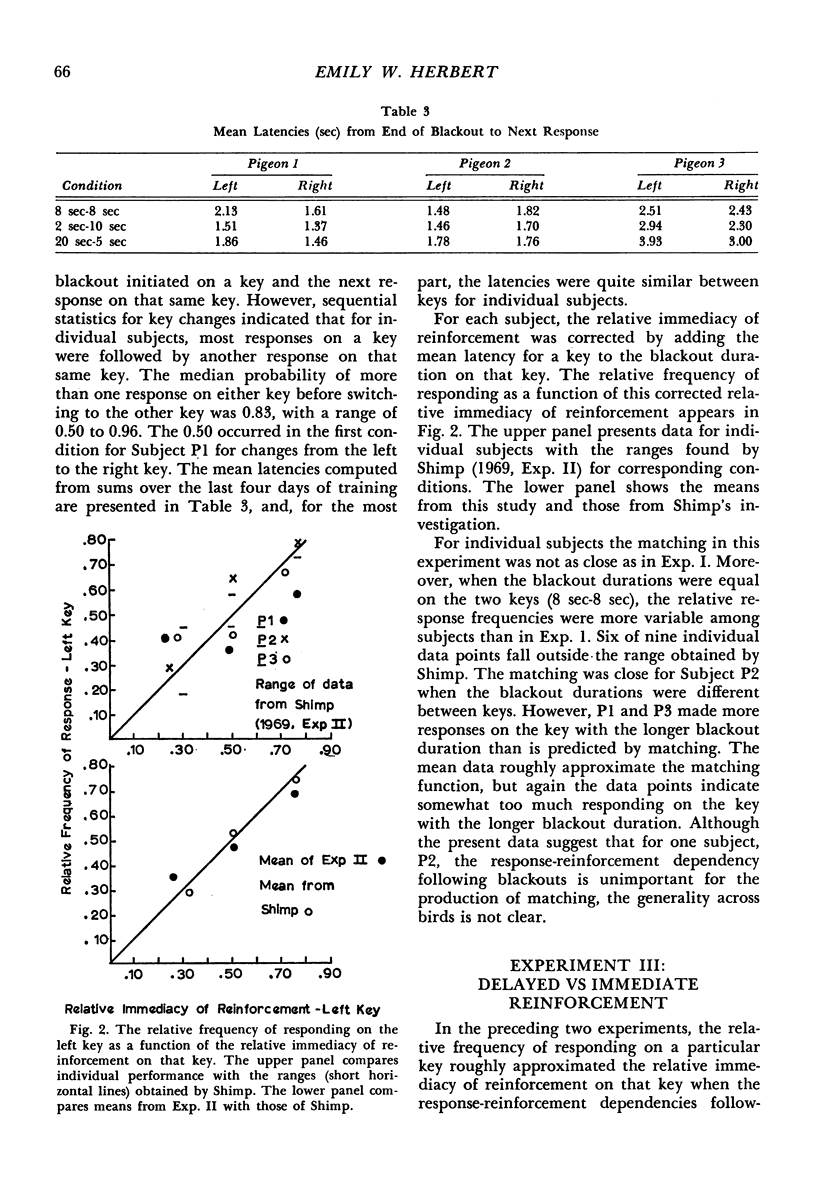
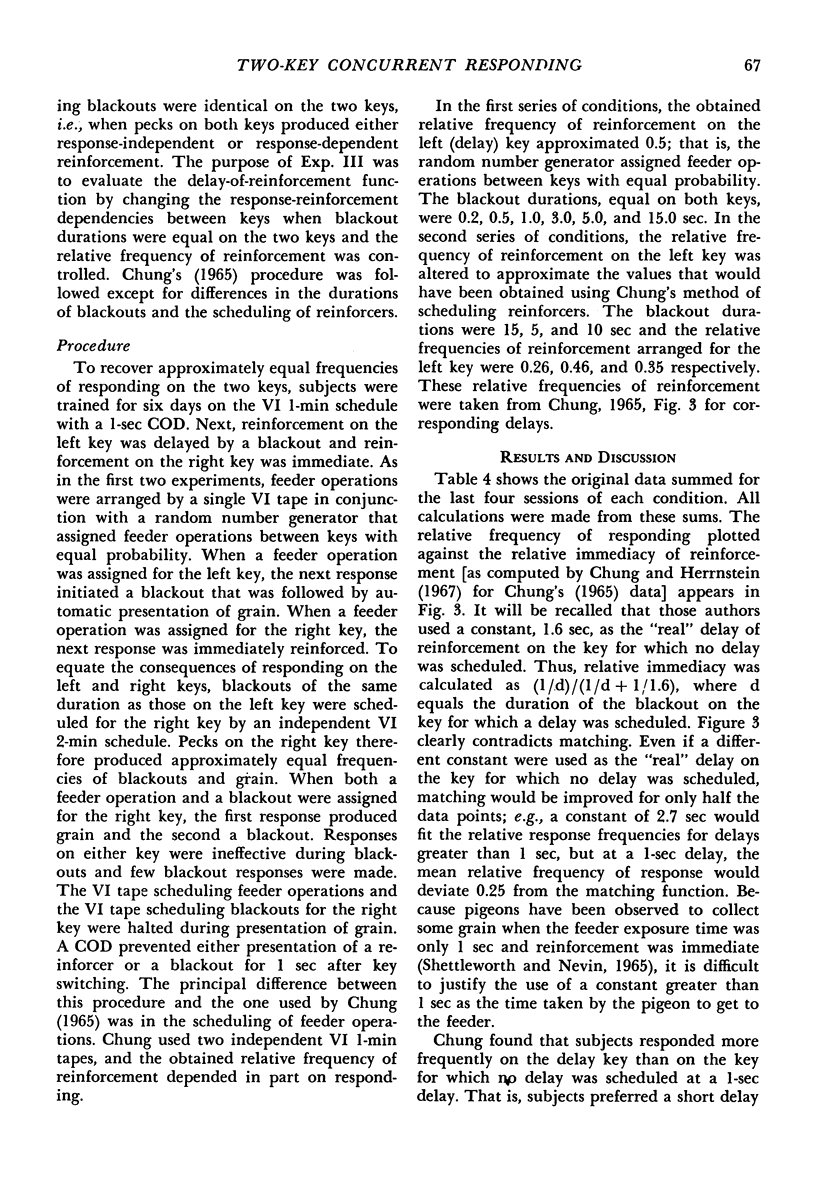
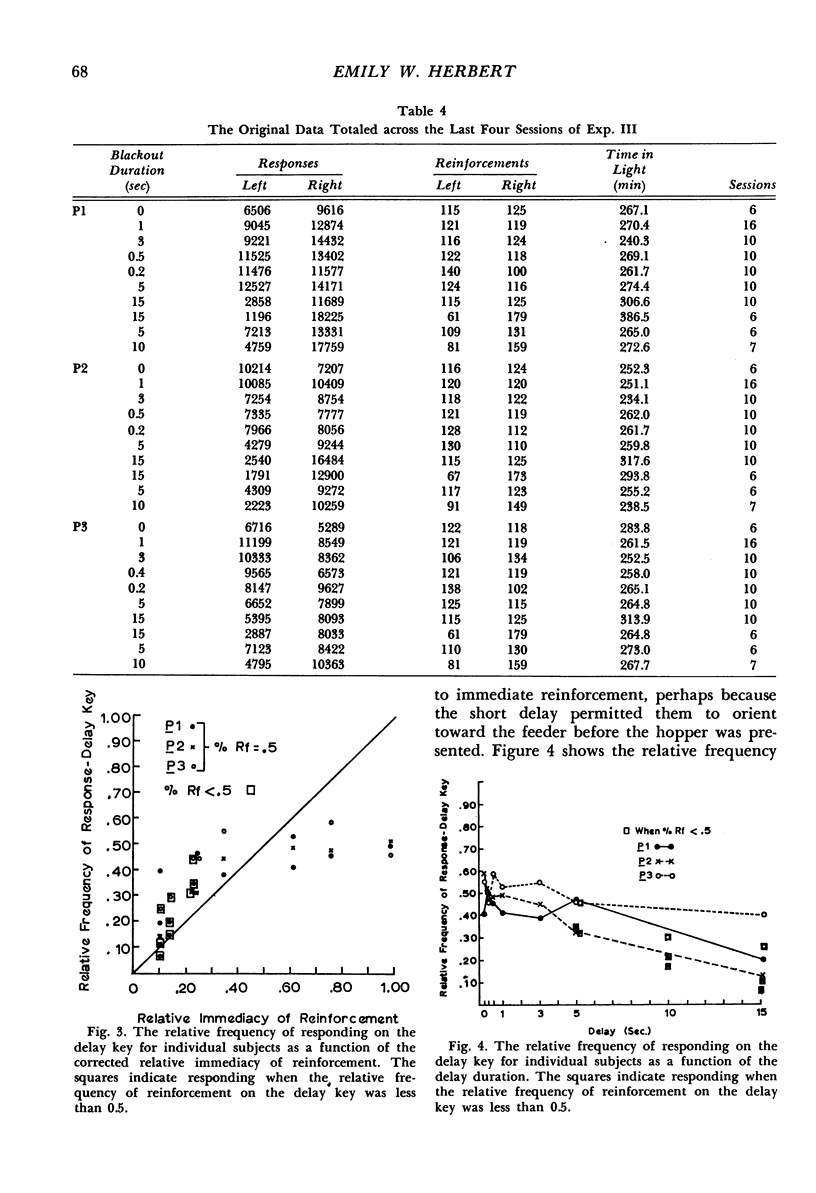
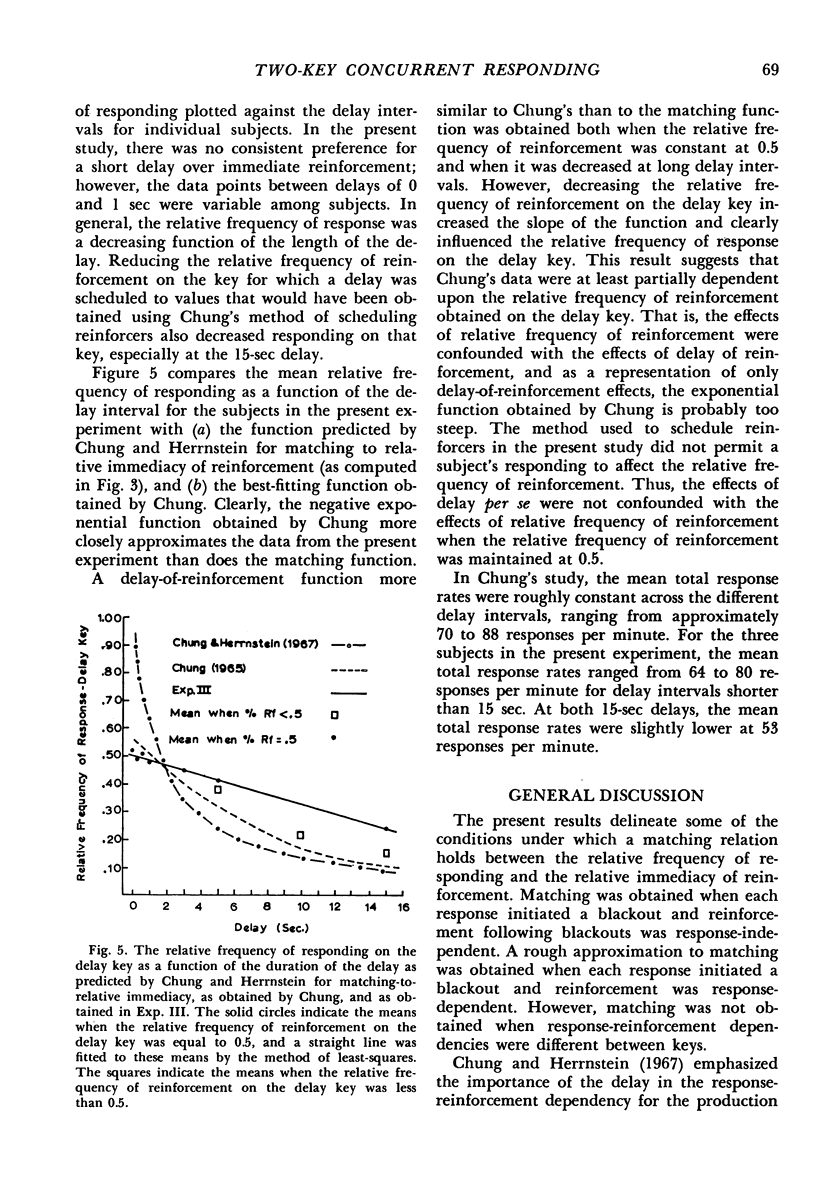
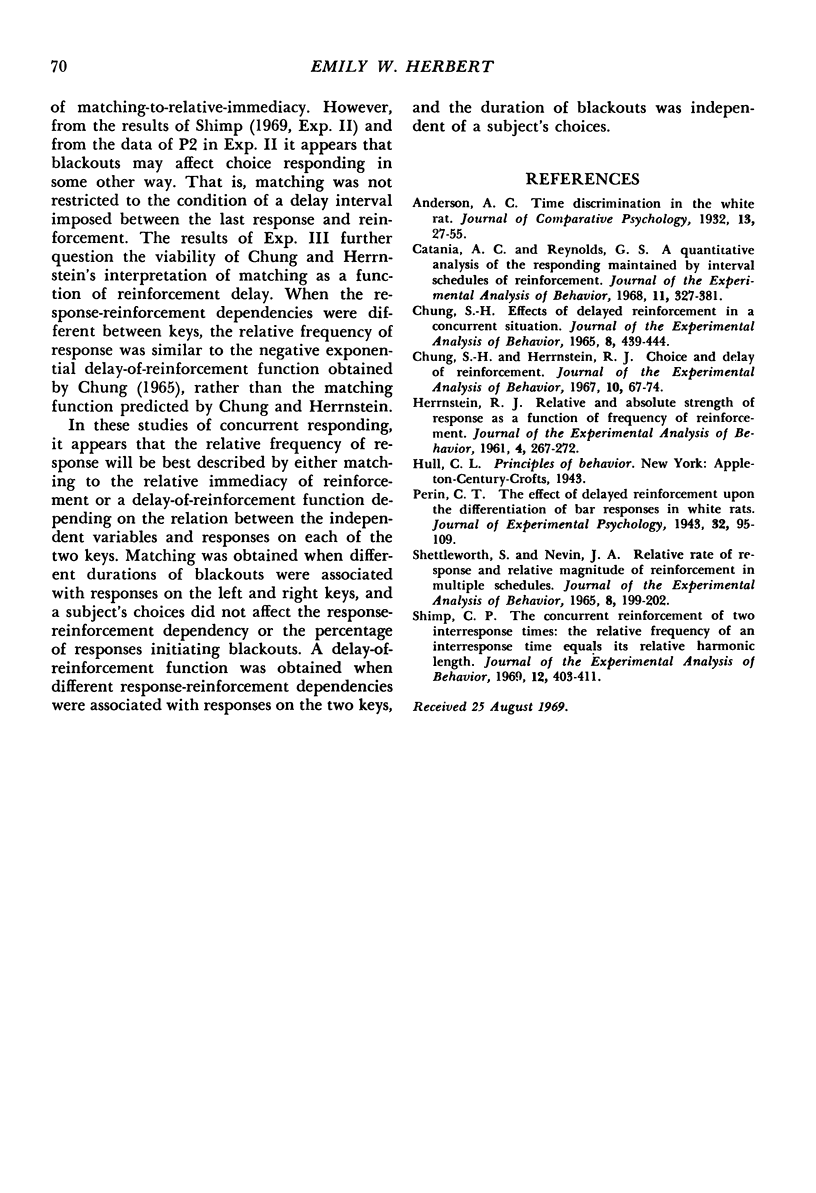
Selected References
These references are in PubMed. This may not be the complete list of references from this article.
- Catania A. C., Reynolds G. S. A quantitative analysis of the responding maintained by interval schedules of reinforcement. J Exp Anal Behav. 1968 May;11(3 Suppl):327–383. doi: 10.1901/jeab.1968.11-s327. [DOI] [PMC free article] [PubMed] [Google Scholar]
- Chung S. H. Effects of delayed reinforcement in a concurrent situation. J Exp Anal Behav. 1965 Nov;8(6):439–444. doi: 10.1901/jeab.1965.8-439. [DOI] [PMC free article] [PubMed] [Google Scholar]
- Chung S. H., Herrnstein R. J. Choice and delay of reinforcement. J Exp Anal Behav. 1967 Jan;10(1):67–74. doi: 10.1901/jeab.1967.10-67. [DOI] [PMC free article] [PubMed] [Google Scholar]
- HERRNSTEIN R. J. Relative and absolute strength of response as a function of frequency of reinforcement. J Exp Anal Behav. 1961 Jul;4:267–272. doi: 10.1901/jeab.1961.4-267. [DOI] [PMC free article] [PubMed] [Google Scholar]
- SHETTLEWORTH S., NEVIN J. A. RELATIVE RATE OF RESPONSE AND RELATIVE MAGNITUDE OF REINFORCEMENT IN MULTIPLE SCHEDULES. J Exp Anal Behav. 1965 Jul;8:199–202. doi: 10.1901/jeab.1965.8-199. [DOI] [PMC free article] [PubMed] [Google Scholar]
- Shimp C. P. The concurrent reinforcement of two interresponse times: the relative frequency of an interresponse time equals its relative harmonic length. J Exp Anal Behav. 1969 May;12(3):403–411. doi: 10.1901/jeab.1969.12-403. [DOI] [PMC free article] [PubMed] [Google Scholar]


